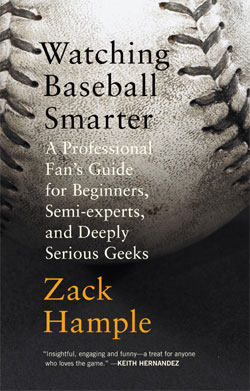
|
 HIT BY A PITCH?
HIT BY A PITCH?If a pitch merely grazes a thread dangling off the hitter's jersey, it counts as a hit by pitch. But if the ump doesn't see it, there's no way to prove it happened. If, however, the hitter gets nicked on the foot and doesn't get the call, he's not necessarily out of luck. In Game 5 of the 1969 World Series, Cleon Jones got hit by Orioles left-hander Mike Cuellar and was denied first base—until Mets manager Gil Hodges retrieved the ball and showed the ump that it had a shoe-polish smudge.
First, the manager gives the "yap" sign, prompting the catcher to walk out to the mound (12 seconds) and shoot the breeze with his pitcher (16 seconds). Then the ump walks out (12 seconds) and says, "Okay, fellas, let's play ball" (2 seconds). He and the catcher jog back to the plate (6 seconds) and settle into their crouches (3 seconds). The pitcher steps onto the rubber (1 second) and looks at the signs for a pitch he'll never throw (3 seconds). Then he steps off (three quarters of a second), and the manager slowly walks from the dugout to the mound (22 seconds) where he blabs to all the infielders about the free premium channels he has in his hotel room and what movies he's gonna watch after the game (17 seconds). The ump briskly walks back to the mound (9 seconds) and says, "What's it gonna be, boys?" (2 seconds). The manager tells him that he's gonna go with his southpaw (3 seconds) and asks about the wife and kids (1 second). The ump says they're fine (half a second) and signals to the bullpen (three-quarters of a second). That's an extra minute and 51 seconds for the guy getting loose—and he still gets to throw eight warm-up pitches when he takes the mound.
When the trainer heads to the mound, the ump joins him to make sure that the only thing being discussed is the pitcher's health. Otherwise, the trainer could relay instructions from a coach without the team being charged for one of its two visits.
|


